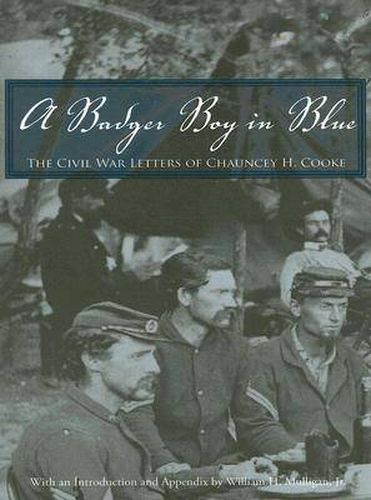Readings Newsletter
Become a Readings Member to make your shopping experience even easier.
Sign in or sign up for free!
You’re not far away from qualifying for FREE standard shipping within Australia
You’ve qualified for FREE standard shipping within Australia
The cart is loading…






Chauncey H. Cooke enlisted in the Union army in 1862 at only sixteen, after lying about his age. Like many soldiers, Cooke saw only limited action in battle, but his letters to family members paint a realistic and compelling picture of daily life in the Civil War. Alongside dramatic descriptions of encounters with Indians, comrades, rebel prisoners, slaves, and southern whites, Cooke also describes the boredom of camp, the chaos of battle, and the suffering caused by illness. Cooke’s emotional closeness to his family, especially his mother, also comes across strongly in his letters, and readers will feel an instant connection to the young soldier through his words. Among other collections of Civil War writings, A Badger Boy in Blue stands out because of the wealth of rich detail included in Cooke’s letters. Readers are presented with an accurate picture of a soldier’s daily life through Cooke’s commentary on everything from the food he ate, to the weather, to the kind of paper that he used for writing. In addition, Cooke’s descriptions of battle are valuable in offering fresh insight into the often-overlooked midwestern armies and campaigns. His descriptions of the siege of Vicksburg and the Atlanta Campaign are especially thoughtful and unique. The letters also present empathetic and colorful portraits of the frightened, defiant, and curious civilians that the army encountered along the way. William Mulligan, Jr., provides an introduction and annotations in A Badger Boy in Blue to add expert commentary and context for Cooke’s letters. Four maps are also included to clarify locations mentioned in the text. History buffs, scholars, and general readers interested in the Civil War will appreciate this thorough volume.
$9.00 standard shipping within Australia
FREE standard shipping within Australia for orders over $100.00
Express & International shipping calculated at checkout
Chauncey H. Cooke enlisted in the Union army in 1862 at only sixteen, after lying about his age. Like many soldiers, Cooke saw only limited action in battle, but his letters to family members paint a realistic and compelling picture of daily life in the Civil War. Alongside dramatic descriptions of encounters with Indians, comrades, rebel prisoners, slaves, and southern whites, Cooke also describes the boredom of camp, the chaos of battle, and the suffering caused by illness. Cooke’s emotional closeness to his family, especially his mother, also comes across strongly in his letters, and readers will feel an instant connection to the young soldier through his words. Among other collections of Civil War writings, A Badger Boy in Blue stands out because of the wealth of rich detail included in Cooke’s letters. Readers are presented with an accurate picture of a soldier’s daily life through Cooke’s commentary on everything from the food he ate, to the weather, to the kind of paper that he used for writing. In addition, Cooke’s descriptions of battle are valuable in offering fresh insight into the often-overlooked midwestern armies and campaigns. His descriptions of the siege of Vicksburg and the Atlanta Campaign are especially thoughtful and unique. The letters also present empathetic and colorful portraits of the frightened, defiant, and curious civilians that the army encountered along the way. William Mulligan, Jr., provides an introduction and annotations in A Badger Boy in Blue to add expert commentary and context for Cooke’s letters. Four maps are also included to clarify locations mentioned in the text. History buffs, scholars, and general readers interested in the Civil War will appreciate this thorough volume.